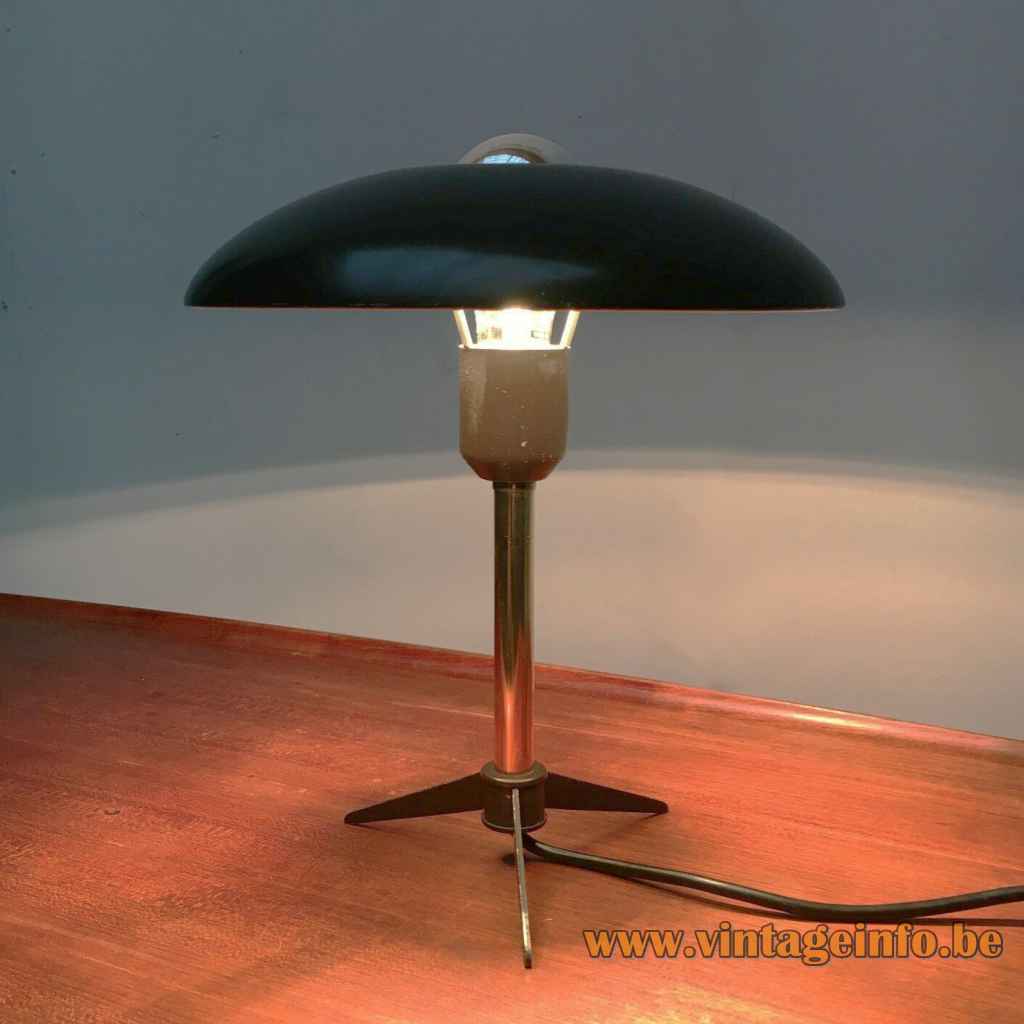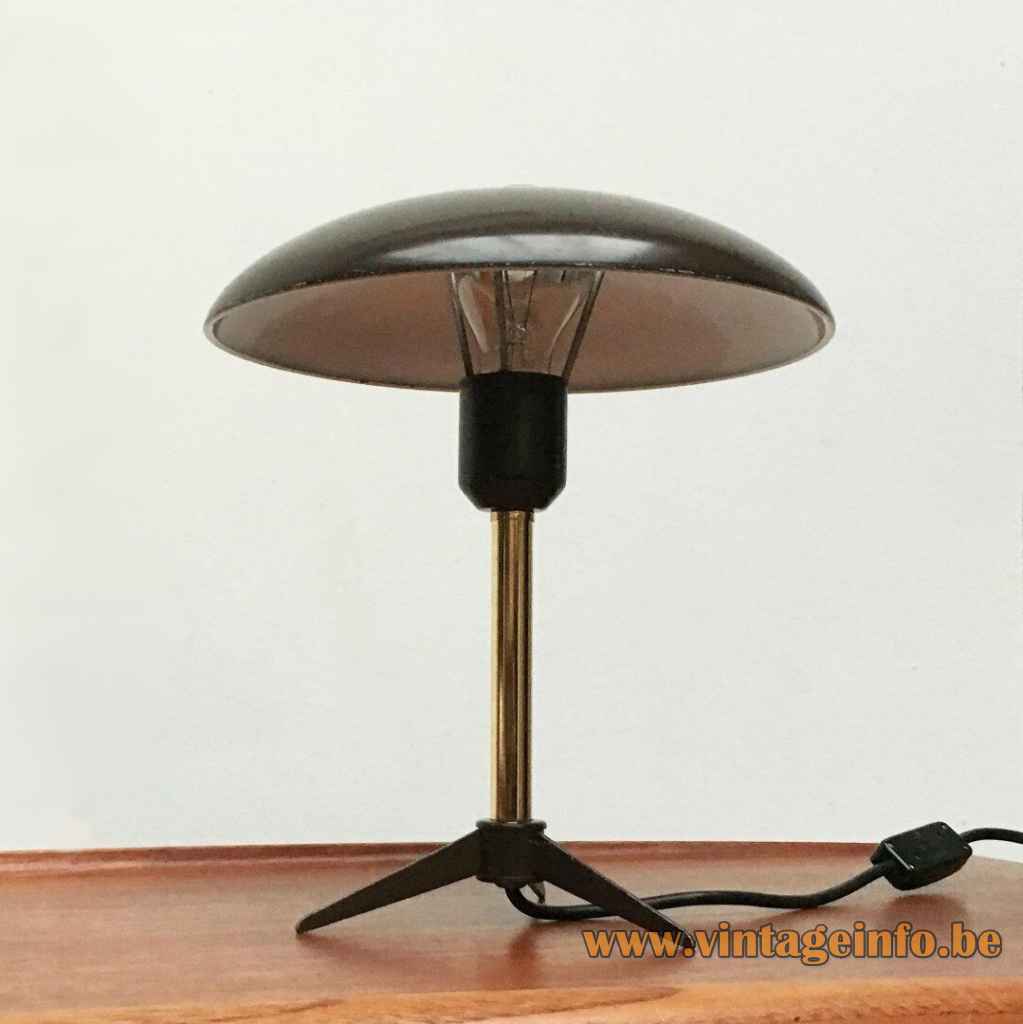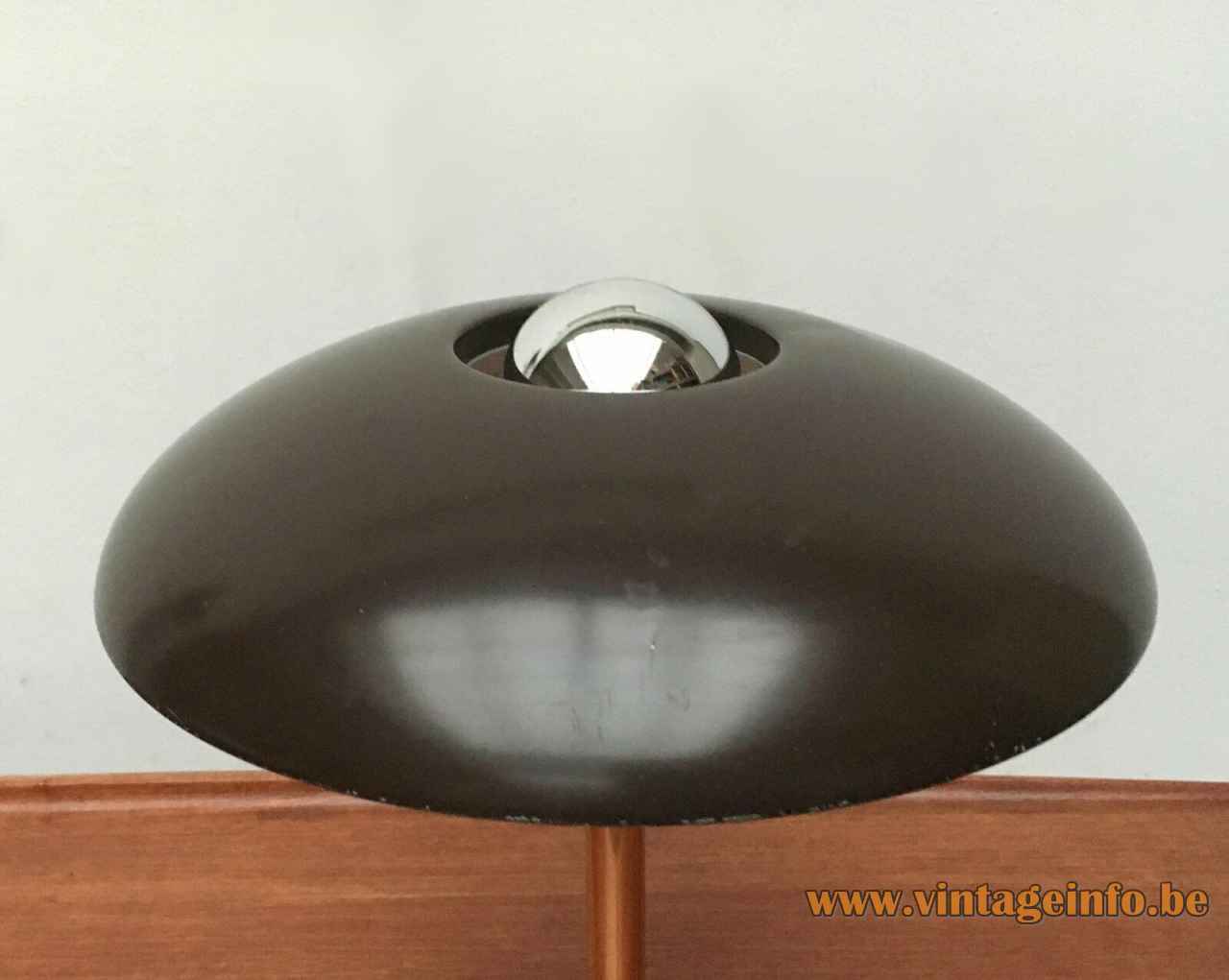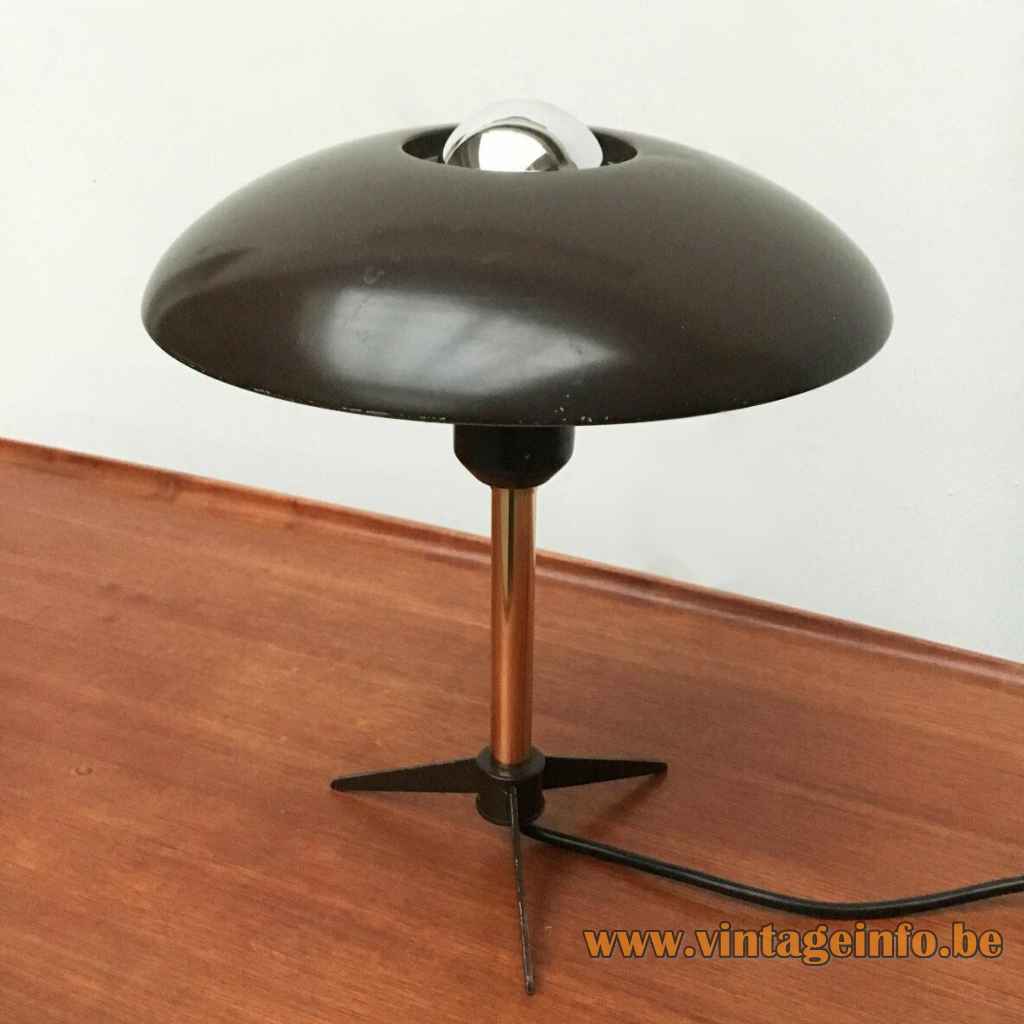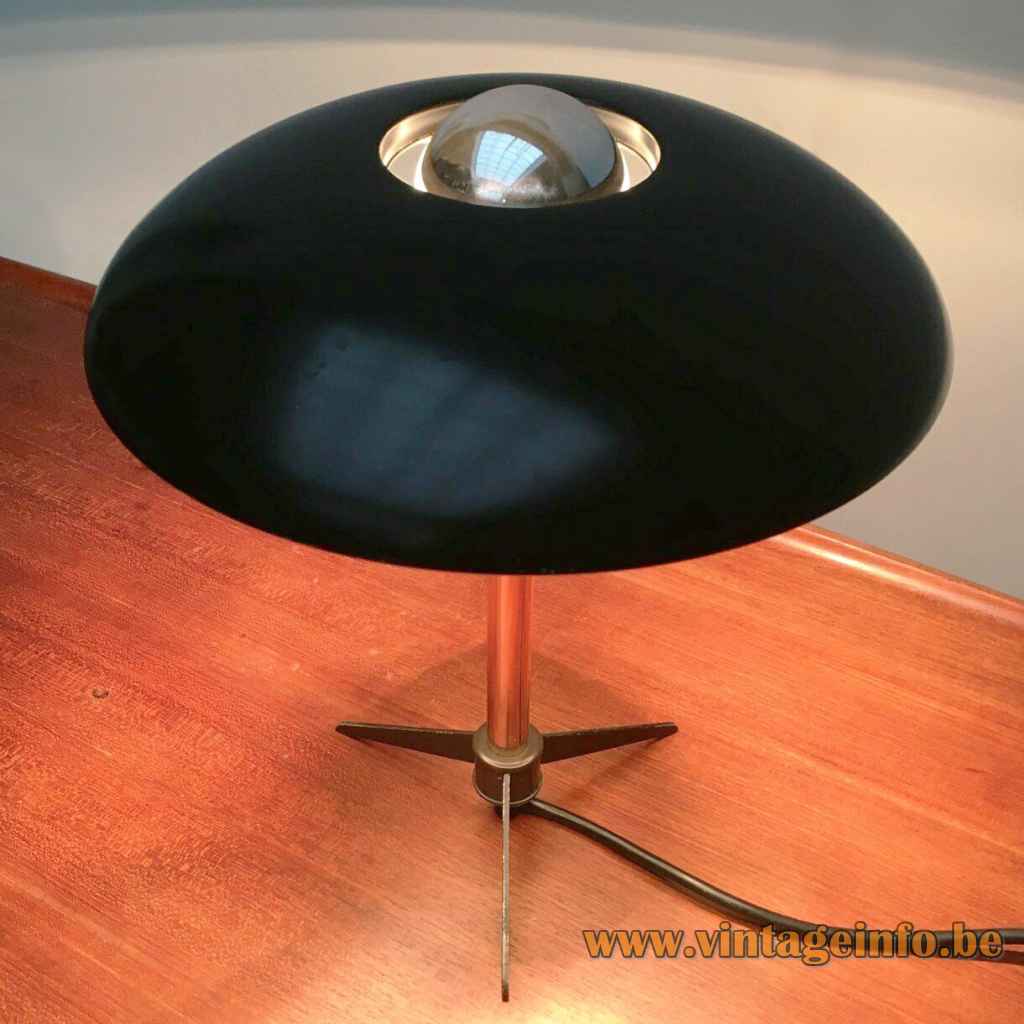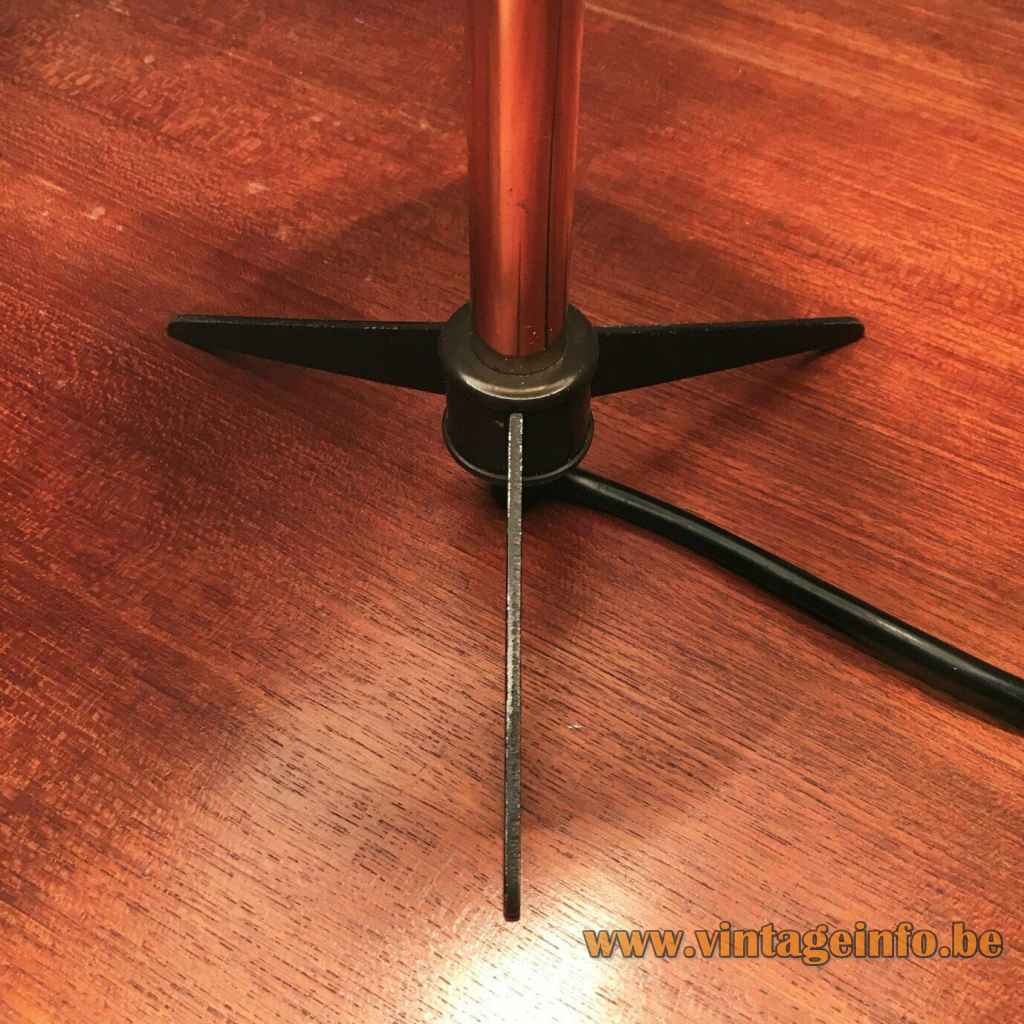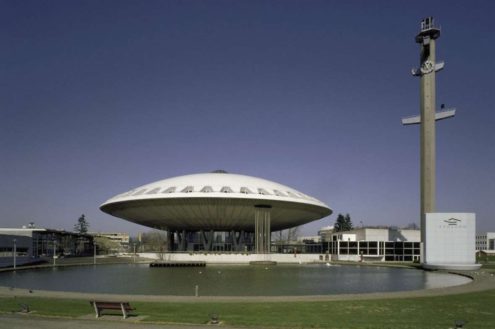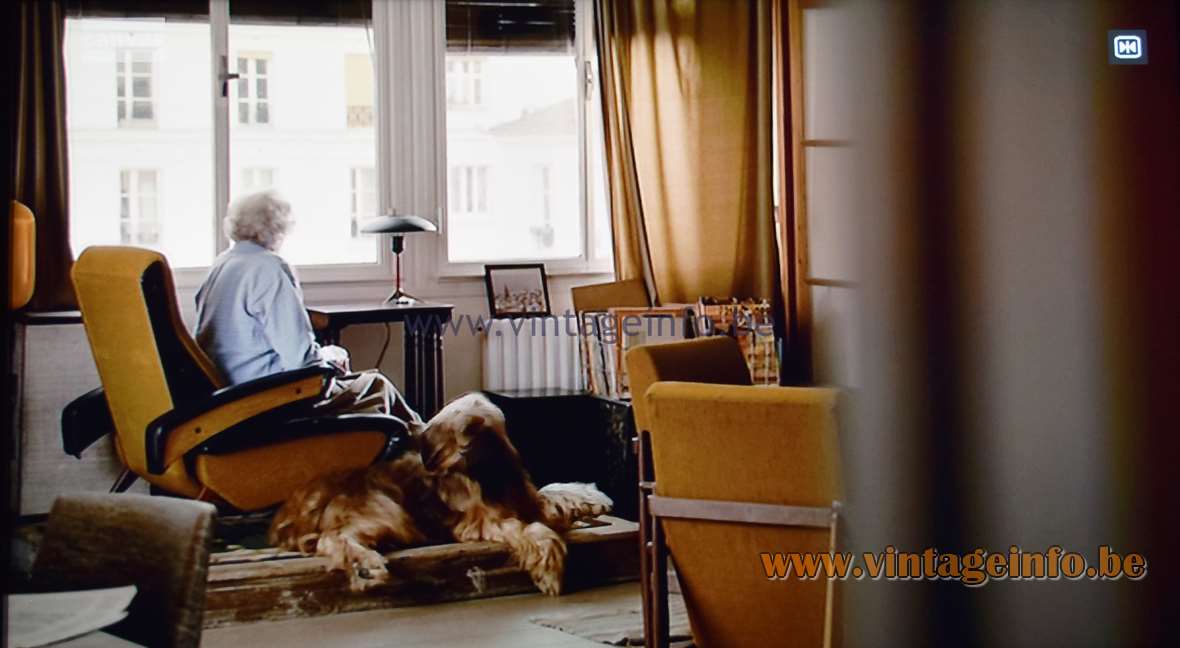Louis Kalff Minou Desk Lamp
Materials: Brass tripod base. Copper rod. Brass ornamental concave ring. Brown painted lamp socket holder. Silver painted lampshade holder with 3 rods. Brown painted aluminium mushroom lampshade with a hole in the middle, painted white on the inside. Bakelite or metal E27 socket.
Height: 32,5 cm / 12.79”
Width: ∅ 28,5 cm / 11.22”
Electricity: 1 bulb E27, 1 x 75 watt maximum, 110/220 volt.
Any type of light bulb can be used. But, preferably a silver tipped light bulb.
Period: 1960s, 1970s – Mid-Century Modern.
Designer: Louis Christiaan Kalff around 1955.
Manufacturer: Philips, Eindhoven, The Netherlands.
Other versions: The first edition from the 1950s has slight differences in the lampshade and the base as you can see below. The Louis Kalff Minou desk lamp exists in many colours and was made in some slight variations.
Early editions of the Minou are named Minou S. They are without grounding. The version with grounding was made from the late 60s until the late 70s, early 80s. It is named Minou 69: this one.
A similar table lamp with a conical tube in stead of a straight rod middle part is named Bijou, you can find it over here.
Louis Christiaan Kalff
(Amsterdam, November 14th 1897 – Waalre, September 16th, 1976)
Louis Kalff was a pioneering industrial designer in the Netherlands during the first half of the 20th century. With a solid background including studies in sculpture, ceramics, furniture design and architecture, he began to work for the Philips company in 1924, department consumer electronics company marketing.
In 1929 he started a department for design of lighting products (LIBU – Lichtadviesbureau (Dutch for light consultancy). Louis Kalff was responsible for the lighting sections of the World Exhibitions in Barcelona, Antwerp and Paris.
As freelancer he also designed posters and advertising for the Holland America Line, Calvé, Zeebad Scheveningen, Holland Radio and others. Louis Kalff also designed book covers.
After World War II Kalff kept himself active in industrial design for Philips. After his retirement in 1960, Louis Kalff stayed with Philips as a consultant and architect. In 1961 he was given the direction and execution of the Evoluon building in Eindhoven. It was the last work of the light architect who almost worked for forty years at the Philips group.
Koninklijke Philips N.V.
Inspired by the fast-growing electricity industry and the promising results of Gerard Philips own experiments to make reliable carbon filaments, Frederik Philips (his father) financed the purchase of a modest factory in Eindhoven, The Netherlands in 1891. Frederik Philips was a Jewish banker based in Zaltbommel.
In 1895, after difficult first four years and near bankruptcy, Anton Philips joined the company. He was Gerard’s younger brother. With Anton’s arrival, the family business began to expand rapidly. The brothers changed their family business by founding the Philips corporation. They laid the foundations for the later electronics multinational.
In 1930 the first shaver of the Philips company was introduced and was simply called “The Philishave”.
A day before the German invasion in the Netherlands on 9 Mai 1940, the Philips family fled to the United States of America, taking a large amount of the company capital with them.
Operating from the US as the North American Philips Company, they managed to run the company throughout the war. After World War II the company was moved back to the Netherlands, with their headquarters in Eindhoven.
Links (external links open in a new window)
The complete history of the company on the Philips website
The Evoluon building – Wikipedia
Website of the Philips Museum in Eindhoven
Louis Kalff – Wikipedia (only in Dutch)
Et si on vivait tous ensemble? (2010) – Wikipedia
Et si on vivait tous ensemble? (2010) – IMDb
Vintageinfo
Bijou desk lamp – early edition from the 1950s
Many thanks to Frank from nullviernull raum+kommunikation for the beautiful pictures and enthusiasm. You can find his shop over here on Ebay.
